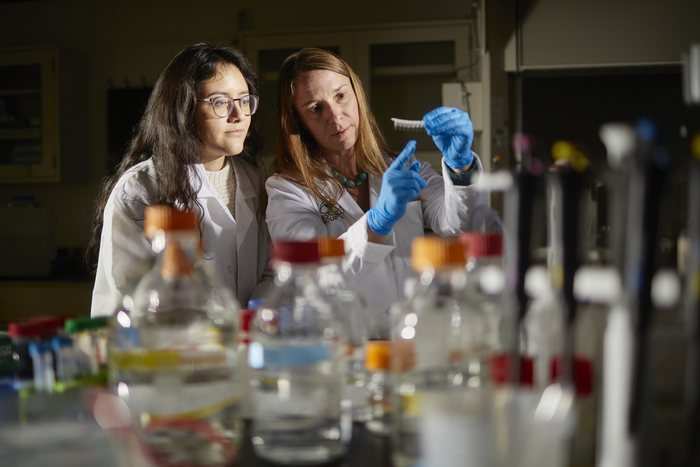Science is one step closer to developing targeted drug therapies that may reduce seizures, sleep disorders, and related symptoms common in people with intellectual disabilities.

Credit: Josh Hawkins/UNLV Photo Services
Science is one step closer to developing targeted drug therapies that may reduce seizures, sleep disorders, and related symptoms common in people with intellectual disabilities.
Research led by a team of UNLV neuroscientists has shown the potential to zero in on the root-level cause of a host of adverse symptoms associated with unique subtypes of neurodevelopmental disorders, work that could one day improve the lives of millions worldwide.
The study, published Feb. 15 in the Nature journal Molecular Psychiatry, builds on previous research by UNLV neuroscientist Rochelle Hines and collaborators, which discovered that two key proteins — collybistin and the GABAA receptor α2 subunit — control the firing of brain cells and contribute to epileptic seizures, learning and memory deficiencies, sleep disturbances, and other symptoms frequently associated with various forms of intellectual disability including Down syndrome, autism, and ADHD.
The team’s newest findings unveiled that mutations in ARHGEF9 — the gene that codes for collybistin — lead to intellectual disability through impaired α2 subunit function. The team further showed that α2 is a central hub for many of the adverse neurological symptoms characteristic of multiple intellectual disability subtypes.
“Seizures and sleep deficits are two of the most common and most disruptive symptoms in children with neurodevelopmental disorders, and sleep deficits in particular are not well treated and can impact the entire family,” said Hines, who partnered with UNLV faculty and undergraduate and graduate student researchers, as well as scientists from Tufts University and Boston Children’s Hospital. “This research gives new hope to patients that we can now develop drug therapies and provide more precise interventions.”
In addition to patients with neurodevelopmental disorders, researchers said their study has the potential to improve the quality of life more broadly for people who grapple with sleep dysfunction, epilepsy, anxiety, hyperactivity, and other neurological abnormalities.
Takeaways
- Intellectual disability is a common neurodevelopmental disorder that can arise from genetic mutations. People with these disorders — Down syndrome and autism are the most prevalent — frequently report related symptoms such as epileptic seizures, learning and memory difficulties, and disrupted sleep-wake cycles.
- By manipulating interaction between two key brain proteins, scientists discovered that one of them — called the α2 subunit — plays a more critical role in intellectual disability and related symptoms than researchers previously thought.
- Knowing which functional interaction is responsible for triggering adverse effects caused by ARHGEF9 gene mutations will help researchers develop precise drug interventions — providing enhanced care to patients.
- Further research is underway, with hope that the work may one day advance to clinical trials.
Publication Details
Nature’s Molecular Psychiatry published Human ARHGEF9 intellectual disability syndrome is phenocopied by a mutation that disrupts collybistin binding to the GABAA receptor α2 subunit online on Feb. 15.
The National Institutes of Health supported the research with funding. Additional researchers include UNLV neuroscientist Dustin Hines; UNLV student researchers April Contreras, Betsua Garcia, Jeffrey S. Barker, and Austin J. Boren; Boston Children’s Hospital neurologist Christelle Moufawad El Achkar; and Tufts University School of Medicine neuroscientist Stephen J. Moss.
Journal
Nature
DOI
10.1038/s41380-022-01468-z
Article Title
Human ARHGEF9 intellectual disability syndrome is phenocopied by a mutation that disrupts collybistin binding to the GABAA receptor α2 subunit
Article Publication Date
15-Feb-2022




